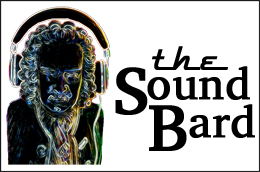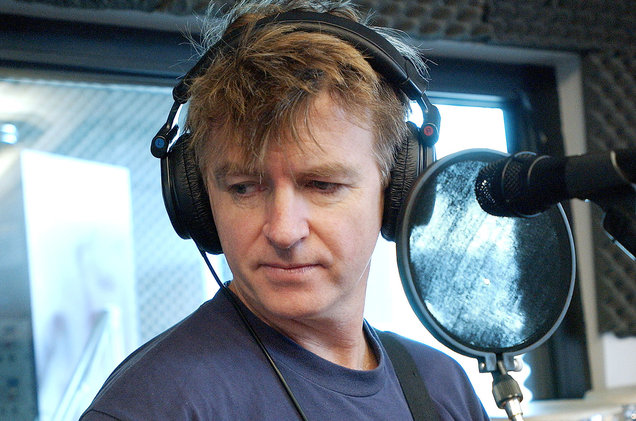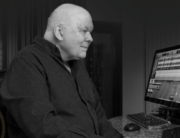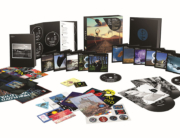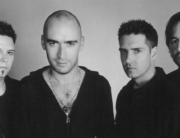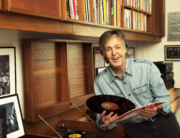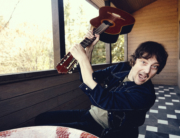BY MIKE METTLER – OCTOBER 2, 2017
For artists conditioned to labor over their studio recording for weeks and even months upon end, the thought of recording new music live and in real time, and then getting it immediately into the hands of the listening public without delay, can be quite the liberating experience.
And that’s exactly what happened with New Zealand’s favorite son, Neil Finn, who had the bold idea to live-stream both rehearsal and recording sessions held in his own Roundhead Studios in Auckland for his new album, Out of Silence. Fans could watch the multi-hour rehearsals between Finn (Crowded House, Split Enz) and a variety of bandmates, a full choir, and a string section live-streamed on Facebook for four consecutive Fridays before the 10 songs that made the final cut were recorded live over the span of 4 hours on August 25. Finn and his ace production team then made sure Out of Silence was properly mixed, mastered, and available for download worldwide exactly a week later, on September 1 (physical formats have since ensued, with CDs out now and a vinyl release due in November).
In my Audiophile column on Digital Trends, Finn and I discussed the ins and outs of making of Out of Silence in front of a live worldwide audience, how to balance mystery and transparency with your audience, and how he’ll weather his next live-streaming experiences.
But exclusively here on The SoundBard, Finn and I discuss his favorite album to listen to on vinyl, why he preferred downloading music to CDs, and the possibility of Out of Silence becoming a surround sound release.

Neil Finn’s Out of Silence cover image (not his mugshot).
Mike Mettler: Out of Silence was instantly available for us to stream and listen to immediately, but there are also the physical formats that are coming to the rest of the world — the CDs are on their way this week, and the vinyl is coming in November. Do you have a preference for how you’d like people to ultimately experience it?
Neil Finn: Not really. The songs hopefully resonate with people and the album’s got a really good flow to it in terms of the atmosphere. I’m proud of it in whatever format people listen to it.
Mettler: I can understand that. What’s your setup at home like?
Finn: It’s a Technics turntable. It’s nothing fancy, but it’s a nice one. It’s a pretty simple setup, but it’s a lovely-sounding room that we’ve got at home, and that’s all we use.
I went and sold all my CDs some years ago when I was told they were still worth something, after I had loaded them all onto my computer, and bought vinyl. Yeah, I got myself back into vinyl.
Mettler: Do you have any particular favorite vinyl albums at the moment? Ones that you’ve played frequently, as talismans?
Finn: Well, there are some great-sounding records out there on vinyl. It’s always a great thing to hear an album like Neil Young’s Harvest (1972), the way that record sounds on vinyl. When you compare it to the digital versions, there’s actually quite a remarkable difference.
 Mettler: I’ve spoken with Neil before [on April 4, 2014], and he’s particularly meticulous about making sure that’s the true analog experience, and not a digital-to-analog form transfer. The rhythm section was recorded in Nashville [at Elliot Mazer’s new Quadrafonic Sound Studios in February 1971; this backing band became known collectively as the Stray Gators — drummer Kenny Buttrey, bassist Tim Drummond, pedal steel player Ben Keith], and it feels like you’re in that room right there with them.
Mettler: I’ve spoken with Neil before [on April 4, 2014], and he’s particularly meticulous about making sure that’s the true analog experience, and not a digital-to-analog form transfer. The rhythm section was recorded in Nashville [at Elliot Mazer’s new Quadrafonic Sound Studios in February 1971; this backing band became known collectively as the Stray Gators — drummer Kenny Buttrey, bassist Tim Drummond, pedal steel player Ben Keith], and it feels like you’re in that room right there with them.
Finn: It’s an amazing-sounding record, and for vinyl, it’s standout. There still are a lot of good records coming out on vinyl. People care a lot more about it now, and I think it deserves to be a growing market, as it obviously is.
Mettler: It’s one physical market people seem to respond to, and perhaps the younger generation is finally hearing uncompressed sound, where they had no idea what they were missing.
Finn: I think people are into headphones now, and that’s actually a good listening experience. But it is weird to think — and I would do it myself — sometimes, people who are checking out new music are just listening on computer speakers. You know, it’s a terrible age to be a bass guitarist.
Mettler: (laughs) Yeah, that’s true! You’re missing out on that low end is so many ways.
Finn: Yeah. But there are some good little devices around now. And I’m a real fan of what digital formats can offer, in terms of making your own playlists. Downloading, to me, was my re-introduction to listening to new music again, because I thought CDs were pretty awful, to be honest. The packaging and everything didn’t seem to have as much inherent value as the price they were charging, so I stopped buying records. And I think a lot of people were the same.
Mettler: Yeah, you felt cheated that you weren’t getting the full experience like we did when we opened up those big gatefold covers and sleeves, and interacting with the whole thing. It was an experience.
Finn: Well, that’s right. I couldn’t even open them without breaking the cases anyway.
Mettler: And the type was so small, you needed a magnifying glass to read any of it, half the time.
Finn: None of it is designed for anybody under 45. (both chuckle)

“You said what, you want a hi-res version of this new album? I’ll get right on that.”
Mettler: I also like that we have hi-res downloads available for a lot of newer releases, at 96/24, where the 24-bit part is the most crucial, really. And you had multitrack recordings to work with here. . .
Finn: Yeah, we did. But we wanted to get it out in a week, because I was like, “Let’s get the damn thing out the day after,” you know? To get it on anything like iTunes or Spotify, you’ve got to give them a week, basically. And we did it as quick as we could. [A hi-res download is pending.]
And like I said, we had two studios going — we had Liam [Finn, one of Neil’s sons, who also performed during these sessions] and two or three other engineers mixing during 14- or 15-hour days, for 3 days. It was an epic undertaking, and we were completely and utterly exhausted at the end of it — which is why I decided I’d come on holiday, at a time you would normally go on tour to promote a record. We’ve sort of done everything backwards. (both chuckle)
It might be commercially naïve or not successful, but I don’t really care, because the experience of doing it was so profound. I’m sure it’s going to inform my process, and it’s certainly liberated me, so it’s come with all the good results.
Mettler: Is there any thought of doing a 5.1 surround sound mix with this material at some point down the line, in maybe some kind of special edition?
Finn: I haven’t planned this yet. These things come about usually as a result of somebody getting enthusiastic about the idea, and wanting to do it, and putting their hand up. We’ve done as many formats as we can for the time being, so we’ll have to see how it goes. Everything about this record is completely untested, and a new approach. But, yeah, I’ll get back to you on that.
 Mettler: Please do! The first Crowded House record came out on the DVD-Audio 5.1 format about 15 years ago, and at the Consumer Electronics Show earlier this year [January 2017], I was hosting some surround sound listening sessions in the Hi-Res Audio Pavilion. The engineer who did that mix, Steve Genewick, was sitting at the table and running our board. The room had been constructed like [legendary producer] Al Schmitt’s studio at Capitol Studios. It was an interesting callback with the guy who had actually done it. We sat there and played back “Something So Strong,” and it felt like we were in the studio there with you guys. So 5.1 was one of the first things I thought of when listening to this new material.
Mettler: Please do! The first Crowded House record came out on the DVD-Audio 5.1 format about 15 years ago, and at the Consumer Electronics Show earlier this year [January 2017], I was hosting some surround sound listening sessions in the Hi-Res Audio Pavilion. The engineer who did that mix, Steve Genewick, was sitting at the table and running our board. The room had been constructed like [legendary producer] Al Schmitt’s studio at Capitol Studios. It was an interesting callback with the guy who had actually done it. We sat there and played back “Something So Strong,” and it felt like we were in the studio there with you guys. So 5.1 was one of the first things I thought of when listening to this new material.
Finn: Oh! Well, good on ya! That’s a nice little thought. Well, I really enjoyed that experience. I don’t know if people are still craving to hear stuff in 5.1, but I’m sure there are a few.
Mettler: You’re talking with one of them! There is a buying public for it, those who are interested in physical copies and hi-res sound. See how I’ve now given you more work to do, even though you’re on holiday?
Finn: (laughs) Yeah-hah-hah! Let me get onto that, right now!
Mettler: Where do you go from here?
Finn: This [Out of Silence] has definitely inspired me to do more with that process. It’s not necessarily going to be with strings and a choir. I might be tempted to rehearse up a four-piece band, and the try and cut something that way. I’m particularly most interested in the live streaming thing because of the potential within that of launching new music, and also doing some really spirited performances of songs I don’t get to do very often from all of the different entities — Split Enz, Crowded House. It seemed that the people who tuned in really enjoyed the experience very similarly to the way I did.
 Mettler: I agree, and let me throw “Try Whistling This” [the title track to his 1998 solo album] into one of your upcoming live streaming setlists, if I may. . .
Mettler: I agree, and let me throw “Try Whistling This” [the title track to his 1998 solo album] into one of your upcoming live streaming setlists, if I may. . .
Finn: Alright, well, I can think about that.
Mettler: Thank you. Finally, will we see you do any of this new Out of Silence material live in the States? Will we literally see you live live-streaming over here?
Finn: I don’t have any plans to do this record live, at this point. We considered getting everything out from the live performances during the month of Fridays. It is quite possible to do it justice, but we’d probably have to do it with a bunch of strings, and the choir as well. It’s a little more involved getting out on the road with that.
But, you know, we are looking for some art festivals funding. We’ll turn up at art festivals if we can get people to give us the money.
Mettler: Well, let’s put the call out, because we’d love to see you do live, what I believe you called at one point, the Feast of Fridays.
Finn: That’s right! Put out a good word with the local arts-funding body.
